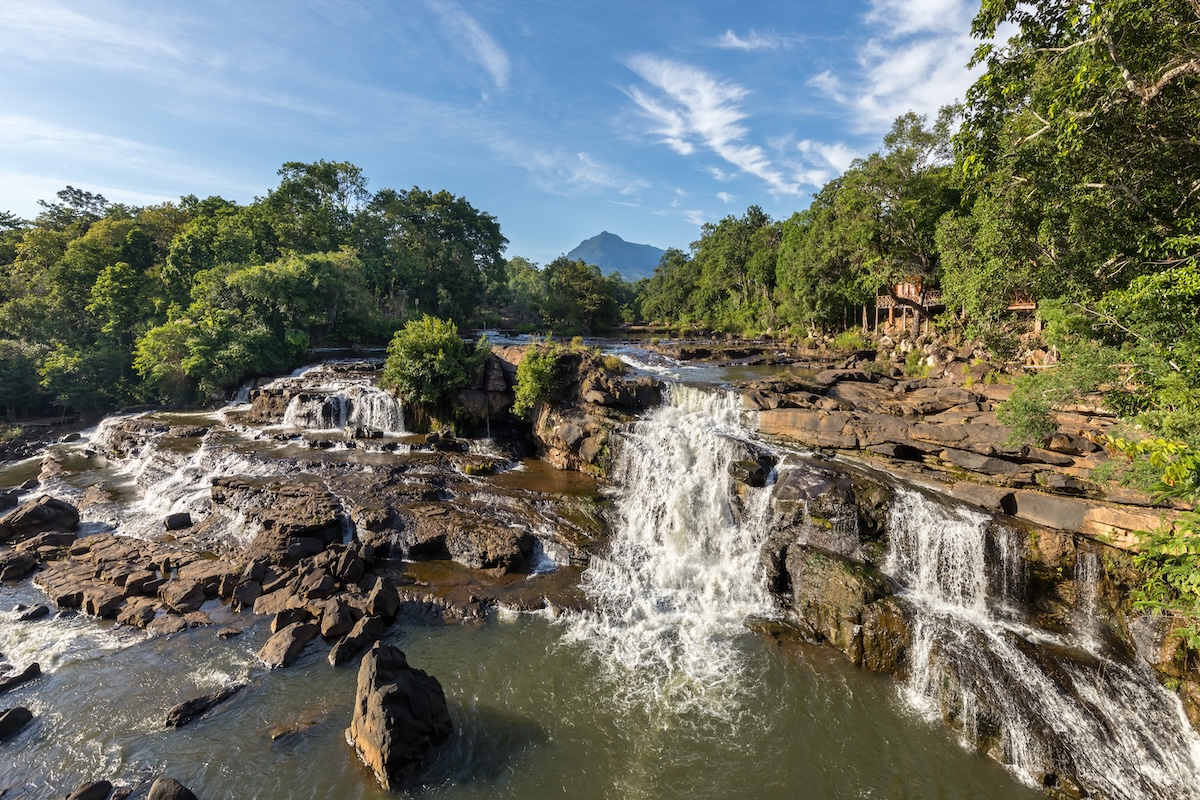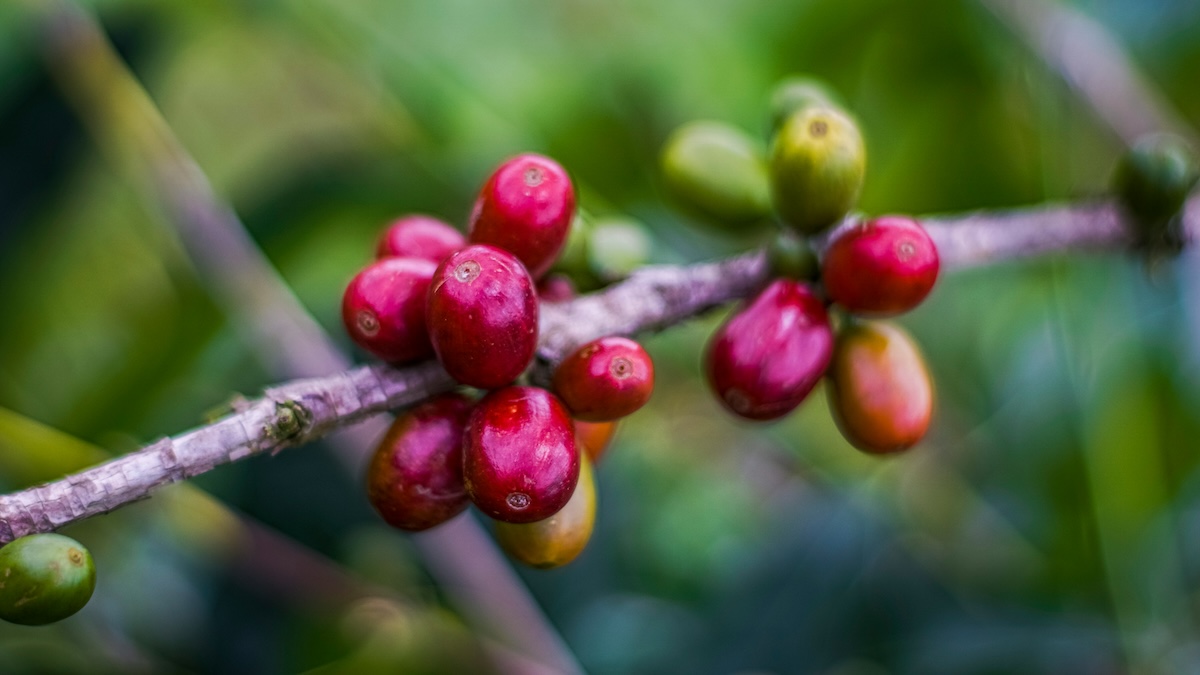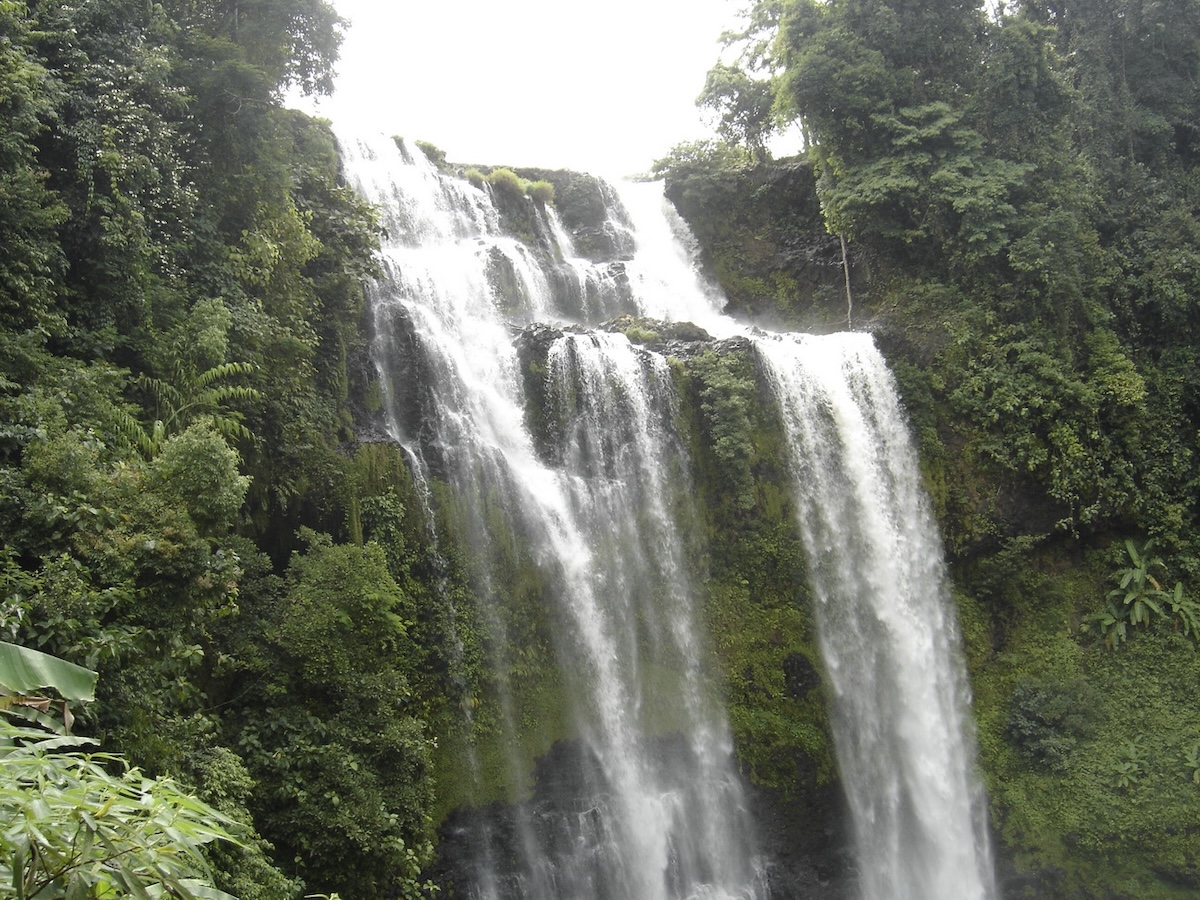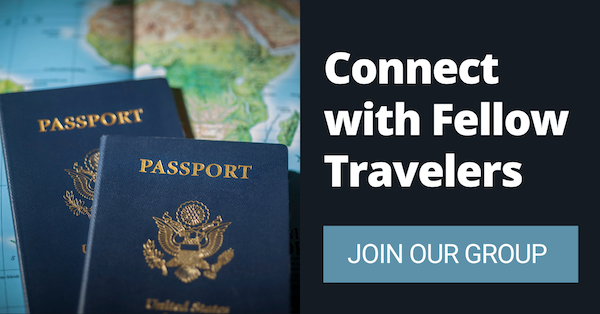
What Are Some Interesting Facts About the Bolaven Plateau in Laos?
By: Heather Keys
Skip to Section
Situated in southern Laos, the Bolaven Plateau is a remarkable region that spans primarily across Champasak Province, with portions extending into Salavan, Sekong, and Attapeu provinces. With an elevation of about 1,000 to 1,350 meters above sea level, the plateau has a cool climate that’s a stark contrast to the tropical heat prevalent in the rest of the country. From May to October, the rainy season transforms the region into a lush, green expanse with thriving vegetation—and the surrounding forests and mountains highlight the plateau’s scenery, making it a favored destination for nature enthusiasts.
Waterfalls of the Bolaven Plateau
The Bolaven Plateau is home to some of the most impressive waterfalls in Laos, and is one of the reasons this area has become so popular among travelers. Tad Fane, one of the most renowned, features twin waterfalls that plunge 120 meters into a gorge. Tad Yuang has a 40-meter drop and is surrounded by a beautiful park, perfect for picnics and leisure activities. And with its series of three falls, Tad Lo is another must-visit location.
Volcanic Origins and Agricultural Success

Photo by Bartolomeus Rumahorbo on Unsplash
The volcanic origins of the Bolaven Plateau contribute significantly to its agricultural success. The volcanic soil is exceptionally fertile, rich in minerals that support robust plant growth. This land is particularly well-suited for coffee cultivation, which thrives in the plateau’s environment. The combination of nutrient-rich soil and ideal climatic conditions has established the Bolaven Plateau as a significant coffee-growing region.
The Bolaven Plateau is globally recognized for its coffee plantations. The high altitude and favorable climate conditions produce some of the finest coffee beans, including Arabica and Robusta varieties. Coffee farming is a crucial part of the local economy, providing livelihoods for many families. The coffee from this region is prized for its quality and unique flavor, attracting coffee enthusiasts from around the world. Visitors can tour the plantations, learn about the coffee production process, and sample fresh, locally-grown coffee.
Related: The Best Countries and Cities for Coffee Lovers Worldwide
In addition to coffee, Bolaven Plateau farmers cultivate bananas, cardamom, rattan, and various vegetables, contributing to the region’s agricultural diversity. This variety in crops not only boosts the local economy but also provides a steady supply of fresh produce to the surrounding areas. The agricultural practices on the plateau are often traditional, with many families relying on age-old methods passed down through generations.
The People of the Bolaven Plateau
The Bolaven Plateau is home to various ethnic groups, including the Laven, Alak, Katu, and Suay people. Each group has unique traditions, languages, and cultural practices, and travelers are encouraged to visit the villages to check out their markets, meet people, and learn more about their communities.
Historical Significance
The Bolaven Plateau holds significant historical importance, especially from the Vietnam War era. It was a strategic area for both North Vietnamese and American forces and witnessed considerable military activity during the war, including heavy bombing. Today, remnants of this history, such as bomb craters and unexploded ordnance, can still be seen. These historical sites offer a sobering reminder of the past and provide context for understanding the region’s role in the war. Efforts have been made to clear the area of unexploded ordnance, making it safer for residents and visitors alike—however, venturing away from marked trails and ignoring signage can be incredibly dangerous.
Protected Areas

Image by Dario Severi on Wikimedia Commons
The Dong Hua Sao National Protected Area, located near the Bolaven Plateau, is a crucial conservation zone. It offers a sanctuary for a variety of wildlife and provides visitors with the chance to see some of Laos’ unique plants and animals. The area is home to species such as the yellow-cheeked gibbon, hornbills, hog deer, Siamese crocodile, and many others. The forest is rich with plant species, and has a mix of evergreens, bamboo, and wetland areas. Conservation efforts in this protected area are essential for preserving the natural environment and supporting the local ecosystem.
Want to read more about our beautiful world? Here are a few places you might love!
Plants and Animals of the Galapagos Islands: A World Wonder of Diversity
Andasibe-Mantadia National Park: A Haven for Endangered Species in Madagascar
25 Animals that Live in the World’s Harshest Climates & Most Dangerous Terrain
13 Most Beautiful Coral Reefs for Diving, Snorkeling & Adventure
About the Author
Originally from Indiana, Heather believes every destination has a story worth telling and a reason to visit. With a deep love of adventure, history, and psychology, she shares travel trivia, tips, and inspiration to encourage you to explore the world with curiosity and optimism. Read her other articles on Frayed Passport here.Featured image by Basile Morin on Wikimedia Commons.
Information published on this website and across our networks can change over time. Stories and recommendations reflect the subjective opinions of our writers. You should consult multiple sources to ensure you have the most current, safe, and correct details for your own research and plans.
Frayed Passport is a participant in the Amazon Associates Program, an affiliate advertising program designed to provide a means for sites to earn advertising fees by advertising and linking to Amazon.com. We also may share links to other affiliates and sponsors in articles across our website.




